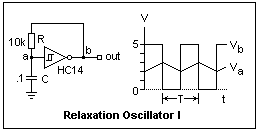I am trying to make a very compact and lightweight circuit that will cause an IR LED to blink on and off at a constant rate, preferably at least once per second but the flashes can be more spaced out. Due to weight constraints, I would like to use a 3V coin battery to power the circuit. The battery doesn't need to last a long time because it can be easily replaced. I have looked online at LED pulse circuits but I haven't been able to find any that work at 3V. Does anyone know of a way to either reduce the voltage of some pulse circuits by reducing the resistance or a way to make a low resistance pulse circuit? Thank you very much in advance!
Here's a link to one design I have looked at http://www.instructables.com/id/How-to-Make-an-Led-Pulse-Circuit/





